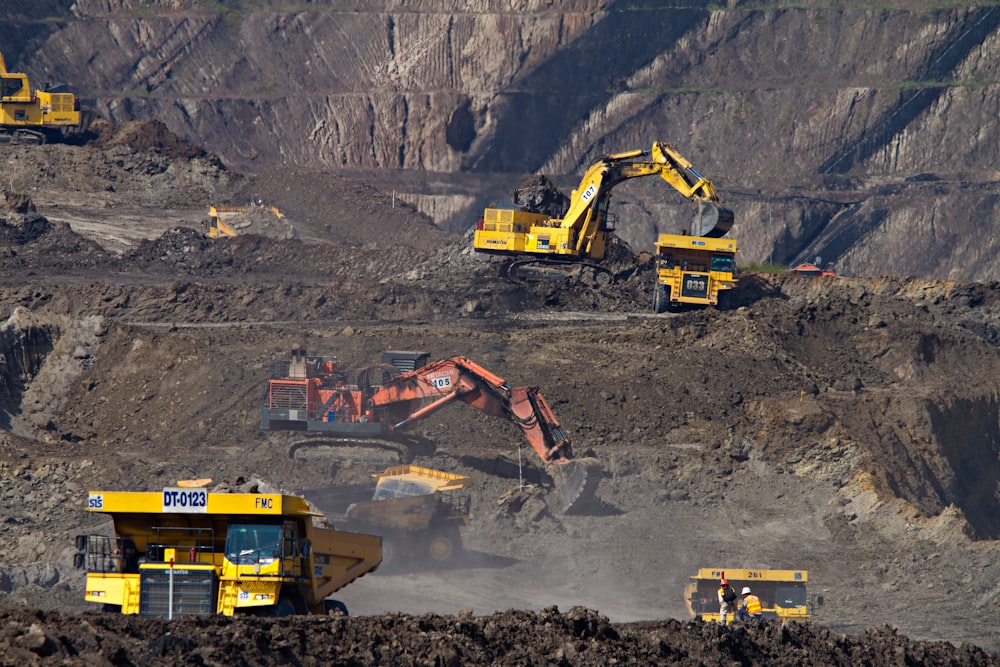Types of mining and their equipment
Mining can take place on the surface or underground. The environment and the type of mined material determine the required form of mining and the equipment used. Both surface and underground mining have three main steps:
- Mining: Drilling, blasting, or digging to remove materials from a mine site.
- Material Handling: This involves sorting and loading materials either to a waste area or to a processing site.
- Material Processing: The final step involves grinding, separating, crushing, refining, and smelting the mined ore or other goods at an off-site plant to make them into finished products.
Surface mining:
Surface mining involves numerous techniques and is the most common method for non-fuel minerals, producing 97% of the amount mined. Miners choose surface mining for minerals located near the surface.
There are three main methods of surface mining. These methods include mining, surface mining, and strip mining.
When mining, miners can cut blocks of hard stone for ornamental purposes, such as granite for construction. However, mining can also refer to the extraction of gravel, crushed stone, and sand using techniques similar to surface mining.
Surface mining requires the creation of a large pit in the ground from which miners extract the necessary material. This is one of the methods that miners can use to extract silver from the ground. Another technique is underground silver mining. The first step in creating an open pit is sometimes to remove the top of the hill with explosives to expose the rocky materials below. Rotary drills create holes to insert explosives for this process.
The third type of surface mining is strip mining, which mainly mines thin layers of coal near the surface. This form of mining begins by removing large swaths of surface material, known as overburden. The first strips of overburden go outside the mine site. After mining products are extracted from the initial strip, the newly created opening will hold the bearings of future overburden strips taken from the mine. For hilly sites, contour strip mining requires the use of shovels or dozers to remove strips of overburden around the hill on the terraces. For flat surfaces, strip mining using equipment such as draglines or scrapers is sufficient.
Underground mining:
Minerals, ore, metals, or other goods located deep underground require different techniques to remove them. Mining can involve hard or soft rock that requires specific tools to extract the materials. For example, tools used to excavate soft materials may not provide enough power to cut through hard rock.
The use of mining equipment for deep mining involves automating processes and using zero-emission vehicles to keep miners safe.
Types of underground mining include the following:
- Mining in Rooms and Pillars: Miners create pillars of ore to support the ceiling as they mine the rest of the required material from the space. This system can also use a continuous mining system to mine material instead of personnel.
- Retreat Mining: This type follows room and pillar mining until the room is finished mining. This method removes pillars for their ore content to maximize material recovery.
- Blast Mining: Blast mining uses explosives to loosen rocks and open up mining areas, especially for removing hard rock from both underground and surface mines.





